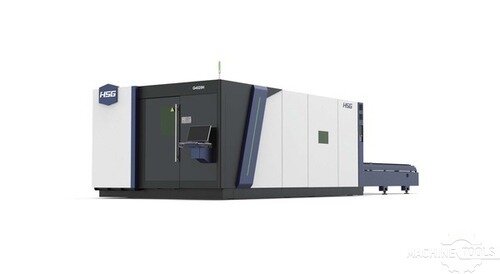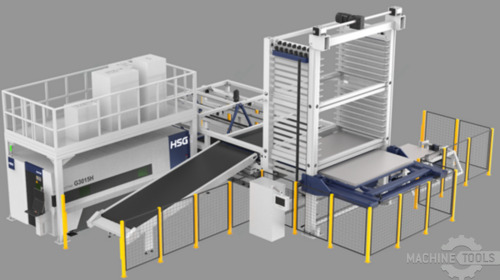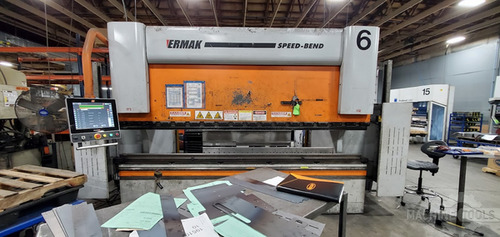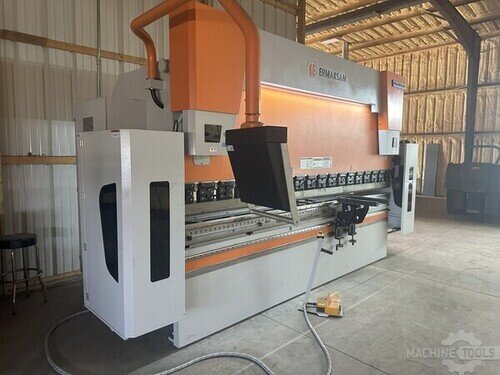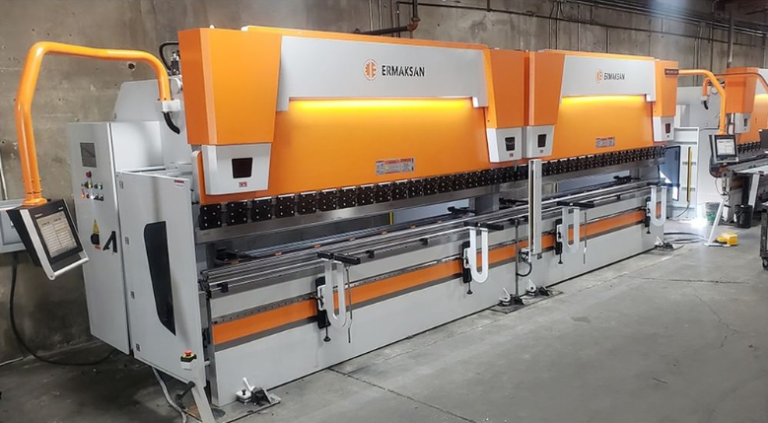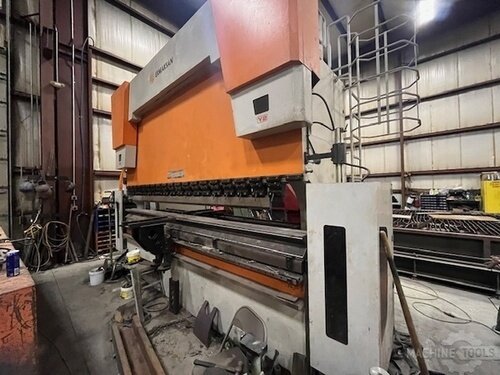I’m Joe Ryan, President of Mac-Tech (joe@mac-tech.com, 414-477-8772). I come from a strong background in finance and leadership, and I’ve always believed that every business decision—especially in the metal fabrication market—must be measured by its return on investment and potential for strategic expansion. At Mac-Tech, we blend innovative thinking with a rigorous understanding of the bottom line. My personal approach to leading the company is shaped by a drive to enhance productivity for our clients while ensuring that each step forward is cost-effective and growth-oriented. Working in this dynamic metal fabrication arena requires a solution-driven mindset, and I’m excited to share my insights on how OEM-fabricator collaborations can unlock deeper market opportunities and amplify revenue streams.
I’ve observed how the call for swift scalability, lean analysis, and operational efficiency grows stronger every year. That’s why Mac-Tech has aligned our solutions—ranging from cutting-edge CNC press brakes to advanced fiber lasers—with the ever-evolving needs of manufacturers. My past experience in financial markets, analyzing risks and predicting returns, has helped me shape Mac-Tech’s offerings so that we deliver both streamlined operations and a solid investment payoff for our customers. Our perspective on ROI isn’t just about numbers; it’s about enabling a more nimble, growth-centric model for any firm looking to get an edge in the metal fabrication domain.
In the following discussion, I’ll showcase how OEM-fabricator partnerships are forging ahead into a new era of collaboration, present strategies for harnessing metal fabrication to drive growth, and highlight how Mac-Tech’s specialized tools and services maximize ROI. By focusing on business benefits—ROI, market growth, and operational efficiency—we strive to empower our clients to compete, excel, and push the envelope in this continually evolving sector.
I invite you to explore these insights, apply them to your organization, and reach out to me directly if you’re ready to take your metal fabrication operations to the next level. Let’s dive into the key pillars of modern collaboration in the OEM-fabricator space.
Next-Level Collaboration: OEM-Fab Partnerships Evolve
In today’s market, OEMs and fabricators find themselves under heavy pressure to produce high-quality outputs while reducing costs and lead times. One of the best ways to achieve these objectives is through deeper collaboration that goes beyond transactional relationships. Instead of a buyer-seller dynamic, we’re seeing a shift toward long-term partnerships where both parties share strategic goals and co-develop solutions. It’s this kind of synchronized effort that allows for greater resilience and faster response to changes in demand.
My experience in finance has shown me the power of joint ventures and co-operative planning. Much like hedging tactics in futures and fixed income portfolios, a shared approach to resource management becomes essential. When OEMs and fabricators combine production forecasts with inventory strategies, they can reduce wasted capital and avoid operational bottlenecks. This synergy not only keeps the books balanced but also frees up resources for expansion and innovation.
Of course, this evolution requires trust and a commitment from both sides to drive continuous improvement. At Mac-Tech, we offer consultation services that help our customers align with their fabricator partners more effectively. With a sharper alignment of processes, material handling, and technology, OEMs don’t merely outsource—they form a cohesive unit that can handle complex projects with minimal downtime and maximum profit potential.
The legacy of “supplier” and “buyer” fades, replaced by a deeper sense of joint responsibility for product quality, delivery schedules, and customer satisfaction. In my view, success in the metal fabrication space increasingly depends on this close, ongoing collaboration. It’s about aligning objectives, merging data sets, and keeping everyone informed of cost and time constraints to ensure each part of the operation delivers optimal value.
Strategic Growth Through Metal Fabrication Synergy
Growth in our sector doesn’t just happen; it’s planned and cultivated through strategic alliances. By leveraging metal fabrication expertise, OEMs can tap into a steady pipeline of new opportunities. When I analyze market trends and import data, I see a clear indication that businesses who align closely with fabricators—the ones who share engineering data, product design insights, and cost targets—are the ones seeing the strongest gains.
One of the biggest advantages of these synergies is the ability to respond to market fluctuations with agility. If demand suddenly rises or shifts to a new product line, having a fabrication partner that’s tightly integrated into your planning helps you pivot faster. This rapid adaptability can be a game-changer in industries where customer preferences or regulations can pivot at the drop of a hat.
From my perspective, the key lies in continuous improvement—another principle borrowed from my time in finance and leadership. At Mac-Tech, we guide our clients in implementing lean analysis at every production step, helping eliminate inefficiencies, reduce scrap rates, and optimize machine usage. Our advanced press brakes, CNC lasers, and automation solutions are specifically designed to enable these best practices. When engineered correctly, these partnerships create a positive feedback loop: better communication leads to more efficient production, which in turn reduces costs and drives higher profitability for everyone involved.
Leveraging the right equipment and strategies together fosters not just incremental improvement but exponential growth. By establishing robust processes, both OEMs and fabricators can push the boundaries of what’s possible, balancing quality with cost consciousness. As an executive who’s watched financial portfolios expand through diligent planning, I can assure you: synergy in metal fabrication can produce significant returns that reflect the best of both worlds—operational efficiency and market dynamism.
HSG 3015H 12KW
HSG-G3015H V2.0-STORE PRO3015 10 SHELF
Maximizing ROI with Mac-Tech’s Advanced Fabrication Tools
Directing a finance-centric perspective into the heart of metal fabrication has taught me the importance of data-driven investments. ROI isn’t an abstract notion but a real measure of how quickly you recover costs and leverage tools to inspire additional revenue. That’s why we make sure Mac-Tech’s product offerings—from tube lasers to hydraulic press solutions—are engineered to heighten throughput while reducing manual labor and costly rework.
In practical terms, this means selecting machinery that aligns with both your short-term profitability requirements and long-term growth ambitions. For example, you might invest in a fiber laser that offers faster cutting speeds and lower maintenance costs, allowing you to fulfill more orders in less time, which expands your market share. By pairing these upgrades with lean analysis, you keep a meticulous eye on workflow, ensuring every new machine yields the highest return possible.
My background also tells me the importance of budgeting for volatility, much like hedging against futures price shifts in raw materials. At Mac-Tech, we don’t just sell equipment; we collaborate with clients to structure financing, manage cost projections, and implement software that optimizes each machine’s performance. These combined efforts ensure you make the most of your capital and stay flexible when market conditions change.
Ultimately, ROI doesn’t just rest on the purchase price. It’s about the speed of adoption, rate of utilization, and adaptability to changing demands in the marketplace. Mac-Tech’s advanced fabrication tools feed into that cycle by reducing production times, enhancing quality, and expanding product capabilities. When you invest in solutions that deliver on all these fronts, you’re set up to truly maximize returns—today and well into the future.
FAQ Section
• What is the best approach to compare cost projections for new machinery?
From my experience, forecasting based on both current cash flow and potential growth scenarios—much like trading fixed income instruments—provides the most accurate picture. Factor in operating costs, maintenance, and productivity gains.
• How do OEM-fabricator collaborations impact bottom-line performance?
By aligning scheduling, materials, and operational strategies, both sides eliminate bottlenecks and inefficiencies, directly boosting profitability.
• How can we quantify ROI for metal fabrication technology upgrades?
Start by analyzing current output, identifying throughput constraints, and projecting your gains if those constraints are lifted. The difference in production times and quality often translates directly to financial returns.
• What role does Mac-Tech play in helping companies scale?
We offer tailored solutions, from machinery selection to training and financing advice, ensuring each client can grow at a pace that suits their needs and budget.
• Can Mac-Tech help with risk mitigation in volatile markets?
Yes, we provide lean analysis and strategic planning, combined with our equipment expertise, to help you hedge against market volatility and ensure stable production costs.
Get Weekly Mac-Tech News & Updates

